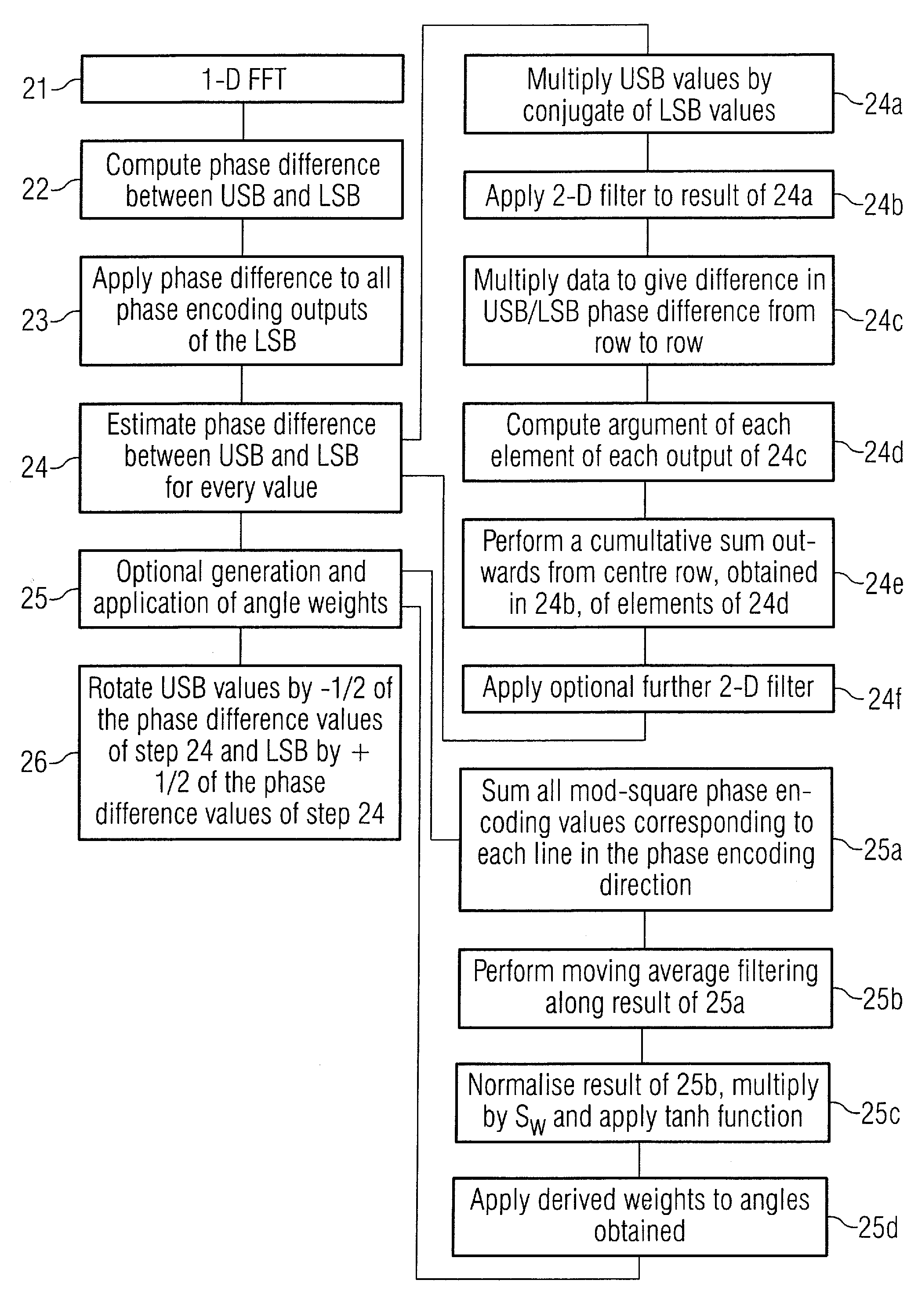Motion compensation in magnetic resonance imaging
a magnetic resonance imaging and motion compensation technology, applied in wave based measurement systems, instruments, reradiation, etc., can solve the problems of increasing the down-time between scans, adding cost and inconvenience to the structure,
- Summary
- Abstract
- Description
- Claims
- Application Information
AI Technical Summary
Benefits of technology
Problems solved by technology
Method used
Image
Examples
Embodiment Construction
[0027]The wireless concept to which the features of the present invention apply is based on upconversion of the RF (Larmor) frequency signals to microwave frequencies and transmission from local coils located in the patient blanket to microwave antennas located on the bore of the scanner. The combination of transmit and receive antennas on the patient and bore respectively constitutes a MIMO (Multiple Input / Multiple Output) system that allows individual signals from the patient antennas to be resolved. A wireless system greatly enhances the utility of MRI scanners by removing the requirement for cable connections to patient coils and gives rise to significant work flow benefits from eliminating the need to sterilize, connect and disconnect the cables. With substantially no reduction of bore size, an increased coil density above the current norms may be achieved, as well as improving scanner workflow. The present invention relates to a method of compensating for motion of the patient...
PUM
 Login to View More
Login to View More Abstract
Description
Claims
Application Information
 Login to View More
Login to View More - R&D
- Intellectual Property
- Life Sciences
- Materials
- Tech Scout
- Unparalleled Data Quality
- Higher Quality Content
- 60% Fewer Hallucinations
Browse by: Latest US Patents, China's latest patents, Technical Efficacy Thesaurus, Application Domain, Technology Topic, Popular Technical Reports.
© 2025 PatSnap. All rights reserved.Legal|Privacy policy|Modern Slavery Act Transparency Statement|Sitemap|About US| Contact US: help@patsnap.com



